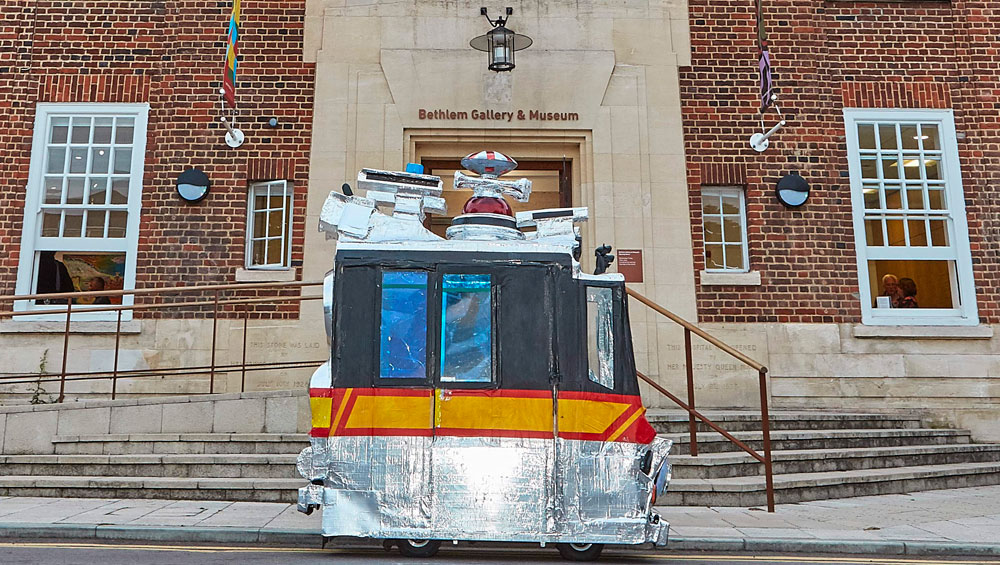
Bethlem Gallery, Bethlem Royal Hospital, Beckenham
2 September – 28 October 2017
by HATTY NESTOR
In 1997, a remarkable gallery was opened at the Bethlem Royal Hospital in Beckenham, Kent, as part of its occupational therapy department. The hospital, founded in 1247, was the first institution in the UK to care for people with mental illness and, nearly 800 years later, as part of the South London and Maudsley NHS Foundation Trust, it is still providing a range of mental health services. Two years ago, the Bethlem Gallery, along with the Bethlem Museum of the Mind, moved into a newly refurbished art deco building in the hospital grounds. Grayson Perry, who formally opened the space, said at the time: “Art is the greatest asset to mental health that I have.”
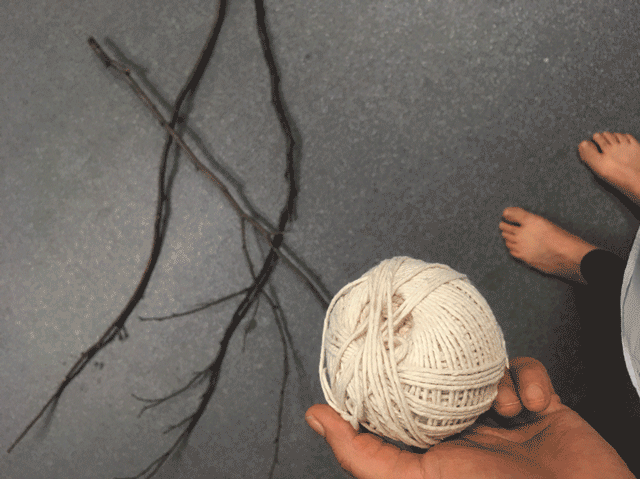
Sara Haq. Stills from video work Bug Her, 2017. © Sara Haq.
The Bethlem Museum provides a resource for the history of mental health with a collection of archives, art and historic objects, and records the lives and achievements of people with mental health issues. The Bethlem Gallery, with which it collaborates, primarily exhibits work by artists who have had contact with the South London and Maudsley NHS Foundation Trust. Its artist-in-residence projects work with patients and staff to improve their experience of the hospital environment, and the gallery campaigns for access to arts in healthcare environments and engages audiences in learning and debate about mental health and artistic practice.
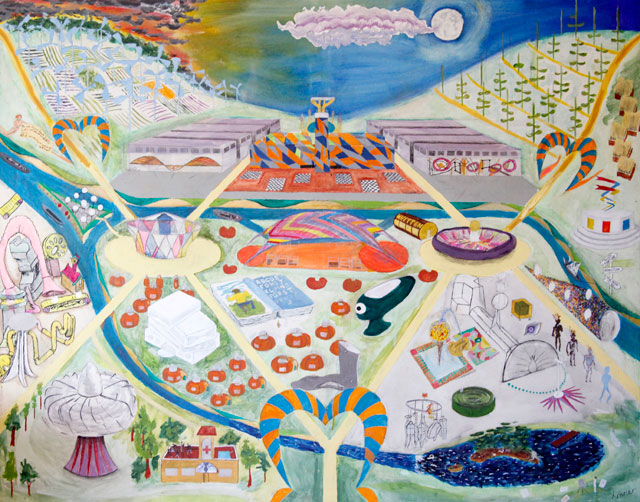
Xavier White. Cohedia A Mind Expanding Cityscape, 2003 – ongoing. Mixed media on canvas. © the artist, Courtesy Bethlem Gallery.
As part of the gallery’s 20th anniversary celebrations, an exhibition, It’s How Well You Bounce, confronts societal issues around mental health through painting, videos, installation and sculptures, with contributions from 24 artists and practitioners . With increased cuts to mental health services, the help on offer tends to be focused more on crisis than preventative therapies, and society’s expectations that people should be able to put up a fight and recover – “bounce back” – could be counterproductive in how we deal with adversity. This exhibition explores our understanding of resilience and looks at how artistic practice and creativity can help.
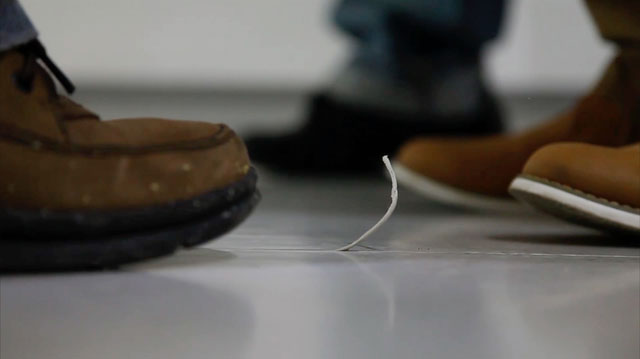
John Mc. Journey to recovery, 2016. Video still (2). © the artist, Courtesy Bethlem Gallery.
John Mc’s HD video, Resilience, is an archive of his experience of recovery, in which the artist incorporates different aspects of his subjective experience in a psychiatric ward. It poses important questions about how we care for one another within mental institutions, communicating the complexity of psychology from a personal standpoint. Another piece, A-tation (2017) by Matthew, depicts an array of scavenged objects from the hospital grounds, including a CB radio, hospital chairs and electronic cables, images that, taken together, construct a brilliant meditation on how we can make art from what is found.
In a similar vein, Comfort the Disturbed and Disturb the Comfortable (2017), a performance piece by an artist called “the vacuum cleaner” defines the artist’s frustrations with political apathy and experiences of mental health services through the spoken word. The spoken text is also presented in the backroom of the exhibition in written form, in purple gel pen on A3 paper, for visitors to read and refer to after the performance. Phrases such as “I want to be heard” and “We need to act collectively” denote the space between subjective experience and that of a wider sociopolitical scope. The spoken text, which was created not long after Donald Trump’s victory in the US election last year, displays a great deal of political urgency, and is incredibly emotive in its discussion of psychiatric and societal issues.
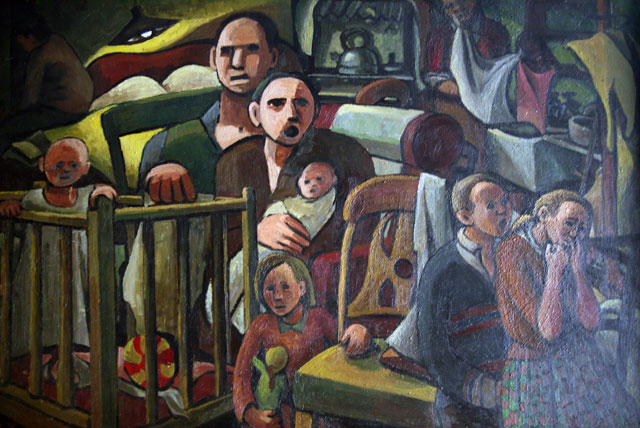
Maureen Scott. Unemployed, 1972. Oil on canvas. © the artist, Courtesy Bethlem Gallery.
The gallery does not see the relationship between psychological experience and artistic endeavours as mutually exclusive; as an institution it celebrates this relationship, exploring how artists operate in the world emotionally, creatively and interpersonally. Central to this exhibition is the gallery’s link with the mental health services offered at the Bethlem Royal Hospital, and many of the artworks are by current or former patients. The art in this exhibition is highly subjective in its exploration of the language used when discussing mental health, government cuts and adversity alongside wellness and recovery. The premise of the exhibition is that there should be cultural shifts towards assimilation and acceptance of those with mental illness, including the voices of artists who otherwise may be hidden. Using art as a tool to combat psychological illness of other cultures is partly present in Sara Shamsavari’s work, Reman, Dubai (2017), where global identity is nuanced by deconstructing a one-dimensional understanding of “othering” and how we can collectively find solidarity through emotional and psychological differences, and not be segregated by them.
Art has the ability to expand beyond the institutions from which it derives. The work of Grayson Perry, who is a patron of the gallery, also features in the exhibition in the form of a large etched “antique” map called Map of an Englishman (2004), which mimics traditional English techniques of cartography from the 16th and 17th century. On closer inspection, sections of the land mass have been given names such as Bad manners, Delirium and Happiness, and an area of sea is named Schizophrenia. Perhaps it is the literal mapping of these psychological states that shows that, even if some mental health issues are very different, they are never mutually exclusive. Perry’s piece is a reminder that our differences can unite as a collective act of resistance; it disallows for a separationist view of mental health.
A separate exhibition at the Bethlem Museum of the Mind has work by former patient Stanley Lench (1934-2000). Scaling the Citadel: the Art of Stanley Lench includes work from throughout the artist’s career. Lench suffered periods of great social isolation that affected him psychologically, and he underwent treatment at Maudsley Hospital in south London and Bethlem Royal Hospital. The divide between his psychological experience and his artistic undertakings offers a space to consider how these two parts of his life informed his art.
The museum also possesses an extensive archive, including medical and institutional records from Bethlem Royal Hospital, the Maudsley Hospital and Warlingham Park (a psychiatric hospital in Surrey that closed in 1999) and historic employee and patient records. It pays tribute to the difficulties faced by patients, through methodologically archiving photographs of individuals and various hospitals in London. First-hand experiences of the hospitals – such as that evidenced through poetry and prose – do not hold much prominence in the archives, but visitors can find information about past patients through their medical records (the archives hold Bethlem hospital admission registers and casebooks from 1683-1932). The records also can be used to inquire about family history and genealogy – as the archive functions as a tool to preserve written histories and records throughout the museum’s lifetime, ensuring that the past is not forgotten.
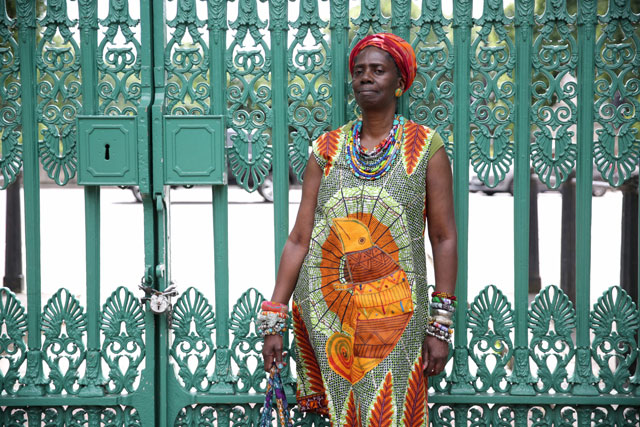
Esther Maxwell. Chameleon ability, 2017. Photograph from digital slideshow series. © the artist, Courtesy Bethlem Gallery.
For this reason, the Bethlem Museum of the Mind is a beacon of optimism. At its heart, it grants institutional space to cultural phenomena that many sectors of society systematically fail to safeguard: with mental health services increasingly being cut, we surely need to redeem such institutions, as they offer an outlet when government and society fail to preserve mental health services. This progressive approach to mental health is presumably a byproduct of the museum’s relationship to how we philosophise and approach mental health, both in terms of its history and in the future. It is imperative that we remember that these artworks derive from lived experience – posing the potential to reaffirm how important art therapy is for those with mental illness. In the context of a cultural institution, the Bethlem Museum of the Mind and the Bethlem Gallery provide an authoritative voice with regard to such issues; reinforcing the fact that no two people experience the world in the same way. Experiences, like art, are divergent for each and every one of us.
• Scaling the Citadel: the Art of Stanley Lench is at Bethlem Museum of the Mind, Beckenham, Kent, until 30 September 2017.